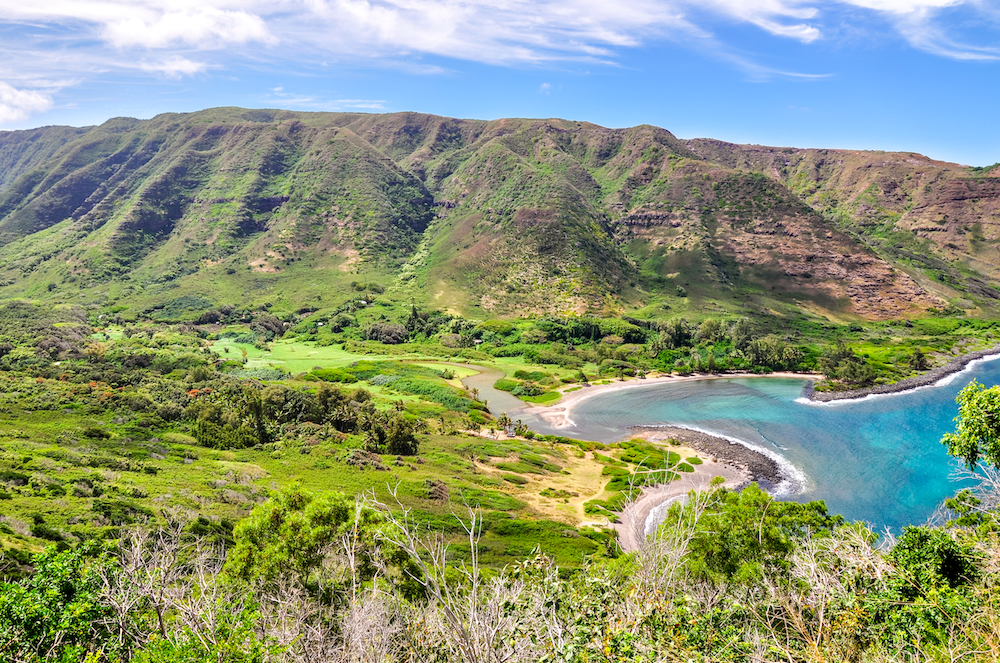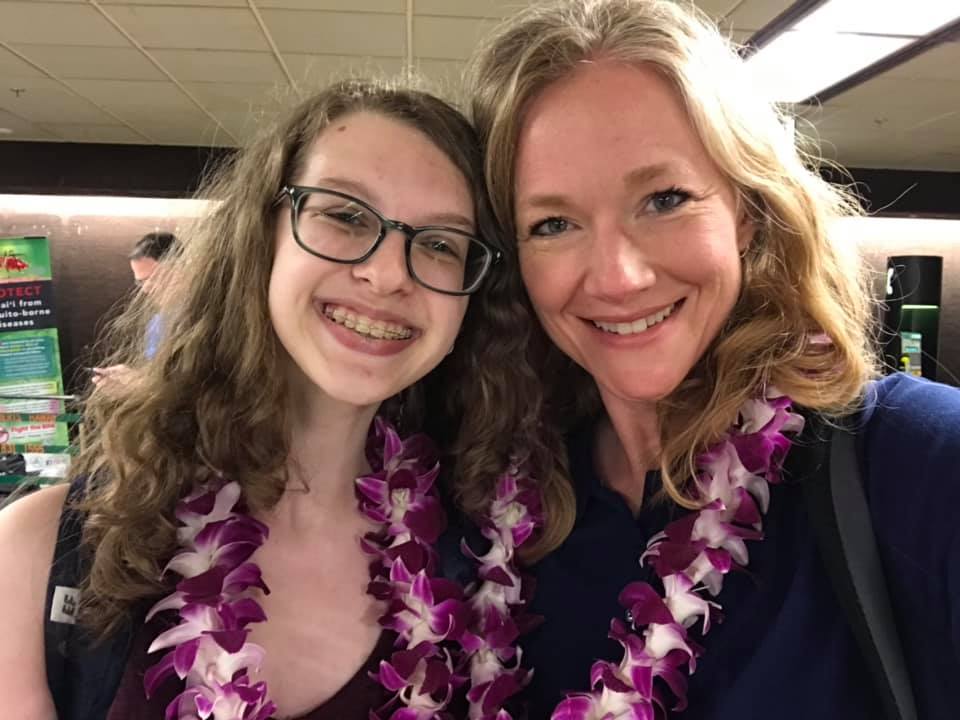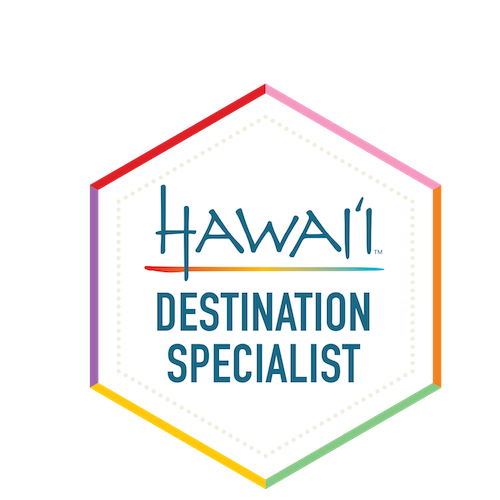If you’re looking to experience the laid-back lifestyle of years past, Molokai is for you. The island has effectively resisted development and doesn’t even have any traffic lights!
Molokai is an island of natural wonders and beauty. Hawaii’s longest fringing reef (28 miles), an extensive network of ancient fishponds, and the world’s highest sea cliffs call Molokai home.
Fun Fact: Views of the sea cliffs were in the movie Jurassic Park III.
Molokai sits in the center of the main Hawaiian islands and is the fifth largest, at 38 miles long by 10 miles wide. Most of Molokai’s 8000 residents live near Kaunakakai on the south shore. The island is split into two main geographical areas. The low western half is very dry and consists of dusty roads, empty cattle pastures, and former pineapple fields. Rolling hills and plateaus make up the rest of what was formerly a large ranch.
Molokai’s eastern half is a high plateau covered with lush forests that receives more than 300 inches of rain each year. Kamakou, at 4,970 feet, is the highest peak on the island. The rugged northern coastline is hemmed with palm trees not found anywhere else on the island.

South Shore
Molokai’s south shore is home to the U.S’s longest fringing reef, 28 miles long. The surrounding waters are crystal clear, which makes for an unforgettable scuba or snorkeling experience. The walls of ancient fishponds fringe the shore. The beaches are limited because the water comes right up to the grass or rocky shores, with very little, if any, sand between the ocean and the land.
Did you Know?
When snorkeling, be careful in reef areas where coral is visible. Coral is a slow growing, living thing. A piece of coral that gets kicked by a swimmer’s fin and breaks off takes many years to be replaced. Without the coral, the marine stocks will disappear, as coral both supplies a food source plus places for fish to hide.
North Shore
The most beautiful parts of Molokai are difficult to reach. The scenic North Shores are only accessible during the summer season, and only to the most athletic hikers or by water in a small boat or kayak.
Transportation
Getting to Molokai
Molokai’s Airport (MKK) (sometimes listed as Hoolehua – its physical location) is a state-owned airport about seven miles northwest of Kaunakakai. The airport accommodates inter-island, commuter, air taxi and general aviation activities, as well as military flights. Direct lights from the mainland are not available. MKK is a 25-minute flight from Maui or Oahu.
Kalaupapa Airport (LUP) serves the residents of Kalaupapa Settlement and visitors wishing to view Kalaupapa National Historic Park. A park entry permit is necessary before making air reservations. Tours require advance reservations. Access to the park is denied to anyone who has not made arrangements with the Hawaii Department of Health or Damien Tours.
Getting around Molokai
Many of the sights on Molokai are spread out across the island, so a rental car, taxi, or small tour bus is necessary to see it all. Getting around is easy. While there is no public bus service, rental cars and taxis are available at the airport. The number of 4-wheel drive cars are limited, so advance reservations are necessary.
Alternatively, taxi companies offer private island tours. The main highway crosses the island from east to west with a few roads branching off for short distances. The roads are good, but fuel is expensive. The island has only two gas stations.
Accommodation
Molokai’s one small hotel, Aqua Hotel Molokai, is centrally located east of Kaunakakai. It is a beachfront property in old Polynesian style, close to the fringing reef. Condominium rentals are available on the west end of the island.
Attractions
Molokai’s lack of development makes it perfect for those who want to get away from it all. Visitors can view Ancient Hawaiian heiau (temples), ride mules to Kalaupapa, hike, tour cultural and wilderness locations with local guides, go kayaking, trail riding, fishing, scuba diving and mountain biking.
West End
West Molokai has some of the state’s largest and least-visited beaches. Papohaku Beach is 3 miles long – one of Hawaii’s largest white sand beaches. Waikiki took sand from Papohaku when it needed help building up its shore. The Moomomi Sand Dunes, one of the last surviving strands of coastal vegetation left in the islands, lie along the northwest shore. They are protected as a preserve of the Nature Conservancy of Hawaii.
Central Molokai

The center of the island — running like a belt from north to south — features macadamia nut and coffee plantations, sea cliffs and the reef. Visitors can take a mule ride to the Kaluapapa Peninsula. The north shore of Molokai, or the “back side” as the locals call it, is almost inaccessible by land. The south shore features the reef and water-based activities.
Along the north coast the isolated Kalaupapa Peninsula is home to the historic Kalaupapa National Historical Park. No road connects the peninsula to the rest of the island, or “topside” Molokai. Supplies are brought in by airplane to the very small airport.
- Palaau State Park is close to the Kalaupapa trailhead. A forest of tall ironwoods makes this a soothing sanctuary. The Kalaupapa Lookout has a viewing area above the peninsula. Winding trails lead to the six-foot-high Phallic Rock honored in local lore. According to legend, women who could not get pregnant would spend the night at the base of the stone, then return home pregnant.
- Kalaupapa National Historical Park was established in 1980 at the site of the historic leper colony to “preserving past experiences so that future lessons may be learned.” Some visitors arrive by private boats. Others fly from Molokai’s Hoolehua Airport to small commuter Kalaupapa Airport. The most popular way is a mule ride or a hike down the steep switchback trail from topside to sea level.
- Molokai Sea Cliffs on Molokai are considered to be the world’s tallest sea cliffs. The Molokai cliffs are the result of land erosion from seawater pounding away at the base of the land. Oloupena Falls is one of several tall waterfalls that drop down the cliffs.
- Kaunakakai is the island’s commercial center. Kaunakakai has remained fairly unchanged since the 1920s. It is a small port with one main street of just 3 blocks, a baseball park that functions as the center of social activity, and a lineup of shops and restaurants recalling an Old West movie set. The island’s main hotel is in Kaunakakai.
Pro Tip: Top off your trip with a visit to Kanemitsu’s Bakery, where locals and visitors alike line up after hours to get hot loaves of fresh bread.
- Highway 450, which winds from Kaunakakai eastward to the Halawa Valley, is one of Hawaii’s loveliest coastal drives. The route is marked by ancient temple sites, 19th-century churches, mango groves, rocky coves, fishponds, and secluded beaches.
- R. W. Meyer Sugar Mill and Molokai Museum – This small sugar mill south of Palaau State Park was built by a German engineer in 1878. It has been restored to operating order. The mill shows the stages of creating sugar from sugar cane and focuses on preserving Hawaiian handicrafts such as quilting, weaving, and woodcarving.
- Kapuaiwa Coconut Grove – Planted in the 1860s by Kamehameha V, the shady grove of 1000 coconut trees covers acres near Kaunakakai. Beware of falling coconuts!
- The Reef – One of Molokai’s main attractions, Hawaii’s only barrier reef is located off Molokai’s south shore. Called Penguin Banks, the reef is a prime scuba, snorkeling, and fishing site (but no penguins live there!). HMS Penguin, a British survey ship, discovered the reef, giving it its name. Snorkeling can be done either by boat or from shore, although boat tours provide the best access to snorkel and dive sites. Boat trips start from Kaunakakai Harbor.
Pro Tip: During whale season (December to March), the waters off the south shore are filled with anywhere from 8,000 to 10,000 whales, so some snorkelers are fortunate enough to hear the whales “singing” to each other.
East End
Undiscovered country and natural wonders such as rainforests adorn the East End of Molokai.
- Kamakou Preserve—The dense uplands of the Kamakou Mountains dominate eastern Molokai. Acres of the forest on Molokai’s highest mountain have been set aside as the Kamakou Preserve, managed by the Nature Conservancy. The Kamakou rain forest is an important island water resource as well as a native habitat for at least 250 types of plants, 219 of which are unique to Hawaii.
- Waikolu Valley Lookout near the entrance of the Kamakou Preserve is one of the last vestiges of mountain bog in the islands. Weather permitting, the overlook offers a view of the emerald depths of the lushest part of the island, where rare birds and plants live in pristine habitat. Only those who are experienced in navigating difficult roads suitable for four-wheel drive autos should attempt the drive to Waikolu. The Molokai Visitors Bureau provides information about tours, treks with local guides, and transportation to hiking and camping destinations.
- Moaula Falls—The most accessible of waterfalls in the Halawa Valley is a great place to swim and learn about Molokai culture.
- Halawa Valley—The long drive (roughly one and a half hours from the airport) on the winding road to Halawa ascends through the pasturelands of Puu o Hoku (Hill of the Stars) Ranch. Halawa is the only one of Molokai’s valleys that is accessible by car. Guided hiking is available. Travelers can picnic and swim at the beach park near the mouth of the river that flows to the ocean from the waterfalls at the head of the valley.
- Iliiliopae Heiau—The island’s largest and oldest heiau is part of a complex designated as a National Historic Landmark. The stone platform is a centuries-old, moss-covered rock that was originally three times its present size. It was once used for human sacrifice. Visitors can walk up the one-mile trail to the site.
Activities
In addition to bicycling and golf (Molokai has one golf course), there are a number of unique outdoor activities for visitors to enjoy:
- Hiking: The Nature Conservancy conducts guided treks to the Moomomi Sand Dunes, the Kamakou Preserve, and the remote Pelekunu Valley. On the northern shoreline, visitors can hike into Kalaupapa from the trailhead next to the Mule Barn, where mule rides begin. Additional hiking tours are available at Halawa Valley and on Molokai’s west end.
- Mule Rides—Visits to the former leper colony at the Kalaupapa National Historical Park are possible only as part of a tour. Guides teach beginners how to ride and control their animals. Hugging the nearly perpendicular cliffs, the trail is more than three miles (4.8 km) long and descends 1,600 feet (488 m) to the peninsula. From start to finish, the experience takes about seven hours.
- Water sports—Activities range from kayaking and snorkeling to fishing, swimming, and diving. Boats are available for full- or half-day fishing charters. Snorkel and dive companies offer underwater adventures in rich barrier reefs. Whale watching cruises operate in season.

Kimberly Brownlee is trained and experienced in travel to Hawai’i.
Call or text 816.866.8883 or email Kimberly@NextAdventureVacations.com for more information
Related Pages:
animal kingdom Cancun Caribbean Disney Disney Cruise Line Disney Springs Disney Wish EPCOT Europe Fastpass fast passes Florence germany grandparents hawaii hollywood studios honolulu ireland Italy kansas city Magic Kingdom maui mediterranean Mexico missouri molokai Oahu packing tips planning restaurants Riviera Maya Romance Travel Rome Scotland teenagers travel tips travel with children travel with teens tropical vacation United Kingdom universal orlando Universal Resort Venice Walt Disney World Yucatan


